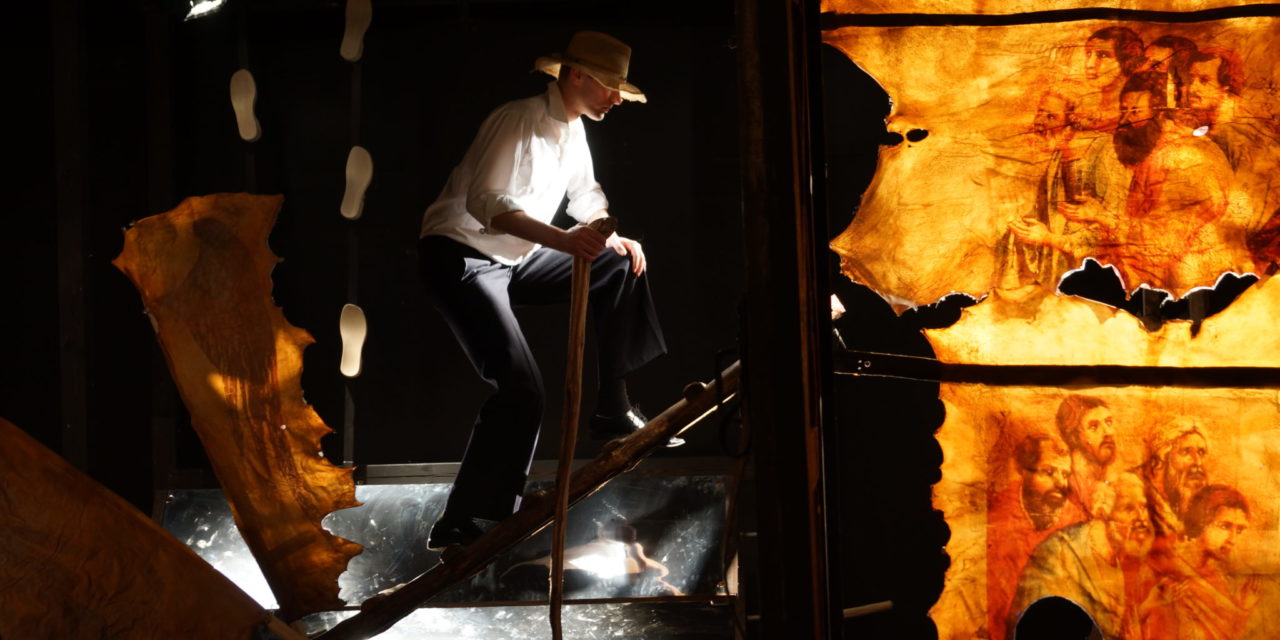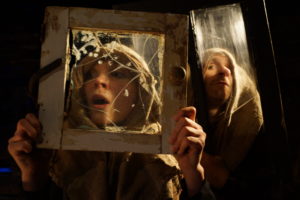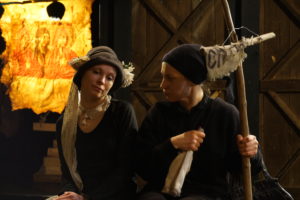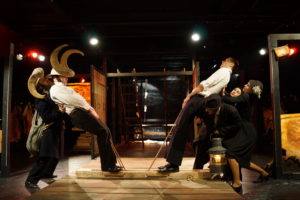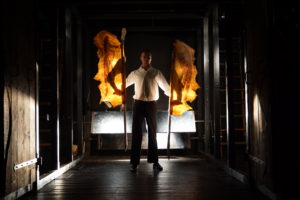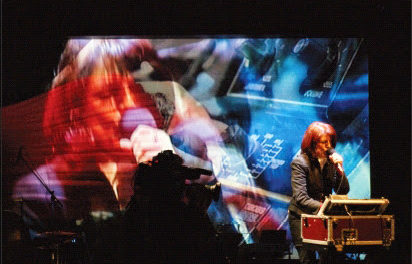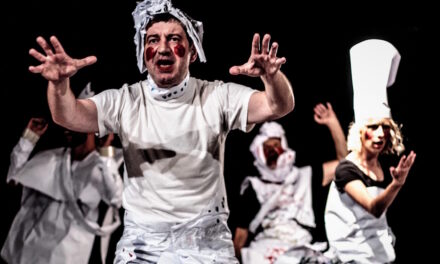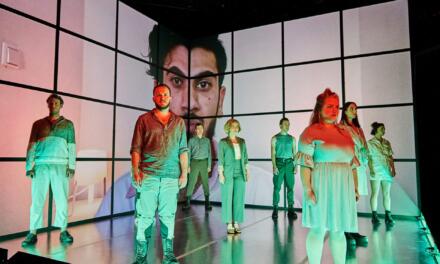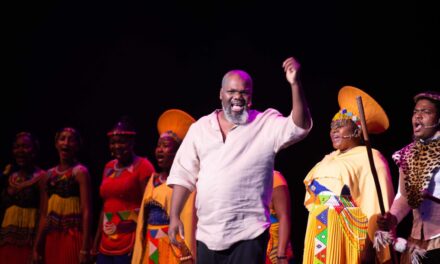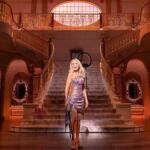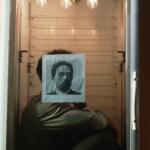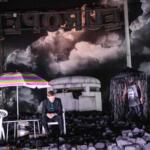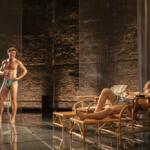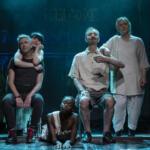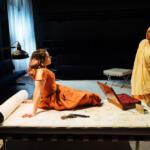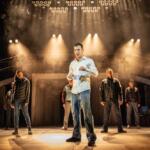Founded in 1991 by Piotr Tomaszuk and Tadeusz Słobodzianek, Teatr Wierszalin is currently run by the former in Supraśl, a small town in northeast Poland surrounded by the Knyszyn Forest. The location is not accidental. It highlights Tomaszuk’s fascination with the area’s intriguing mix of cultures, religions and languages. Intense exploration of folk beliefs; intermingling of the high with the low; carnival confrontation of the sacred and the profane: these are some of the most typical features of the company. In contrast to other regions of Poland, certain aspects of contemporary culture in Supraśl – or more generally in Podlasie – reveal Belarusian and other Eastern influences – including Orthodox Christianity – that have filtered into what may be very generally described as the Catholic dominant in Poland. As many performances by Teatr Wierszalin have proved, this mixed condition bears significant linguistic, artistic and social consequences. It is the performance – with a focus on the intense “liveness” and spectacular quality of the visual and the sonic – that is at the core of the stage language of Teatr Wierszalin. This “language” is indebted to the legacy of Poland’s experimental twentieth-century theatre. For Tomaszuk, as he himself says, “there are two names that count: Tadeusz Kantor and Jerzy Grotowski.”
Adaptations of canonical scripts have never been a prominent part of the work of Teatr Wierszalin. Rather, Tomaszuk has been preoccupied with stage adaptations of prose narratives, and with staging his own plays. The productions might be inspired by canonical or contemporary masterpieces, but hardly ever have they been restricted by textual intentionality. The most recent performances mark a significant aesthetic transformation. Premiered on 29 October 2016, Adam Mickiewicz’s Dziady. Noc Pierwsza (Forefathers’ Eve: The First Night) is not only the crucial play of Polish Romanticism but also the central work of Polish culture in general. The other production first staged in 2016 – Historyja o chwalebnym zmartwychwstaniu Pańskim (The Historie of the Lord’s Glorious Resurrection), by Mikołaj of Wilkowiecko – is the masterpiece of the old Polish mystery plays. Piotr Tomaszuk describes his work on these plays in a conversation with Tomasz Wiśniewski.
Tomasz Wiśniewski: In the production of The Historie of the Lord’s Glorious Resurrection, Teatr Wierszalin introduces many parentheses, quotation marks; increases the multiplicity of perspectives; develops various levels of the story. Another of Piotr Tomaszuk’s recent productions is Forefathers’ Eve: The First Night. Here we have a very visible framework, but the story develops much more directly.
Piotr Tomaszuk: You have to start from the fact that the natures of these dramas are different. In the case of the fourth part of Dziady, we’re dealing with a piece in which the assumption is that we’re telling a story. It plays out over three hours in one house, one place; and it consists of someone unknown entering that house, haunting that house, and in stages discovering his past. If that’s not enough, it turns out that the master of the house is strongly linked with his past and, in fact, bears part of the responsibility for that person’s drama. At the end of the story, we see that it wasn’t a person that entered, but a ghost, who really came not to tell his story, but to warn the master of the house of something.
The whole thing can be enclosed in the structure of the narrative material, which is a story and not a myth. That’s not the structure of the narrative of the Historyja. Mikołaj of Wilkowiecko tells a part of Christ’s deeds. But those are deeds that are part of the mythological message that is part of Holy Writ, the New Testament, the Letters of St. Paul. That’s why the content is of a completely different nature.
I think a different kind of question is more important. That is whether something links these productions. And of course, something does. If we speak about the theatre of Tadeusz Kantor, who used the term “theatre of death” to refer to his theatre, then I ask myself whether there’s a better subject for the theatre of death than the Historyja. After all, in this piece, everything plays out from the perspective of death. Of death and resurrection; but for there to be a resurrection, there has to be death. In Dziady we’re dealing with an identical situation. That is the theatre of death too. That’s where it comes from, my perverse reference to this source of Polish theatre, to this style, to the figure that was Tadeusz Kantor, and to everything that his work means for the Polish theatre and for world theatre. You could say that in the Historyja, I’m even quoting – quite consciously and deliberately – several creative impulses or even “images” from Kantor.
TW: From the audience’s perspective, in the fourth part of Dziady, language and musicality play a very foregrounded role. The musicality of the language, of that Polish, is an elemental force, which is – in comparison to the Historyja – less reined in by Wierszalin, there where the rhythms are imposed by a specific articulation.
PT: Yes, but the perfection of a tool is defined by the degree to which it is effective when it comes to opening up different textual materials. The tool that we have at our disposal in Teatr Wierszalin is a kind of human possibilities, but also the possibilities of the company. To make it possible for these productions to take place, I have dozens of rehearsals with the actors, adapting, checking, backing off from many suggestions. And these are not situational solutions – these are rhythmic solutions. These are rhythmic solutions, and everything that the text tells us, that the author writes, is for me a source of constant inspiration and of tracing the meaning that it was all about for the author.
TW: How would you describe the Wierszalin Theatre in Anno Domini 2017?
PT: It is a theatre that plays itself out more in the imagination than one that is projected to the outside; it’s set out before the spectator and operates on the principle of grabbing at that spectator. It’s the theatre that I bring here because I dreamed it up.
TW: The musicality, visual qualities and the images in the Historyja – they come out of a dream? To what extent do they come out of working together with your company?
PT: To a greater extent they come from what I bring. Of course, if I hadn’t brought that to my company, who are accustomed to a specific way of working, I’d never have put on those productions. There’s no company like that – in Poland or the world – to whom you could come and say: “Listen, I dreamed this scene this way.” And to sing two or three lines and the next moment, to have a company that’s ready to repeat what I offer to them. In other words, to give me an opportunity to hear what’s playing inside my head.
But the moment of an embodiment is always very important – just as the word is the embodiment of a certain thought, but is also different in the moment when it is embodied. So that ability – like lightning – to put on the body of what is carried in the matter of the imagination, sometimes sung, and in such a form – the form of images, feelings – presented to the company, in order to create for myself a workshop, to have that degree of trust, to have actors who work together with me with all their lives and all their energy, all their talent, not negotiating with me about what can be done with my ideas, not carrying out diplomacy, but just immediately getting down to trying out certain effects, possibilities, variations.
TW: Could I ask about the role of the parchments, skins, images in the Historyja? Can I ask about the history of how they came about?
PT: On one hand, here the talent of Mateusz Kasprzak was decisive, our colleague, who’s worked with us now for several years and is the designer of our sets. I communicate very well with him and respect his work. But he’s not deaf to what I bring, and certain things are born in our conversations, in the possibility of the lightning construction – even using improvised elements – of certain spatial solutions, rejecting them, and experimenting, for example, in the field of material, of light. It’s always been well known that it’s a matter of what is fleeting. After all, the Master appears and a while later the door isn’
t opened and He disappears; what’s that then? It’s like a light in a picture. But now, to achieve this and not another impression, and to achieve beauty – that’s a completely different process. The theatre is not only about ideas. The theatre is about the technology of transforming an idea into a material effect, one that has to have within it the elemental particle of beauty. Otherwise, you can’t create a space that matches the word and the emotion. So that we want to hear about the Resurrection of Christ, that Christ cannot be ugly.
TW: The perspective of Doubting Thomas is very much around in Teatr Wierszalin. This speaks of the possibility of reading a miracle in two ways – that’s a leading feature all the time.
PT: It is magnificent in the theatre that untruth becomes truth thanks to the fact that it is unreal. Content becomes truth because it is unreal. Truth renders itself truth because it is untruth. It is a pretense. And therefore it can be real. No other circumstance embodies the reality of the word for us; always the medium will be poorer, closing it off, very often destroying it. The theatre, the more it sets for its own self-borders and conventions, the more conventional the language it sets up, at the moment when the spectator starts to watch the performance, at the moment when the curtain parts, the more defined and artificial – that is, created for the use of this and no other story – the language is which the theatre operates with, the more it is unreal, then all the more are we able to take part in the truth, which has a chance to play itself out before our eyes, and which we can feel precisely because it is untruth. In the literal sense of that word.
TW: There’s much coarse ribaldry in the production.
PT: Yes, but it’s all enclosed in that parenthesis. A naivety of associations is only possible to the extent that it’s possible in the artist’s imagination, one who isn’t professionally involved in the theatre. But in Dziady, for example, the imagined director, the sender of the message, operates with a completely different imagination, with completely different categories. At no point is there a reference to what the outline of the show is or a convention that is an established convention. Here space is more the space of imagination; it is more created in the head and not in what had been seen, for example, in Padua or Rome.
TW: Is Teatr Wierszalin fleeing from reality? Is there a danger of escapism?
PT: No, it is rather a fascination with the possibilities of literature, a fascination that has been granted me perhaps for the first time in my life. I have to reflect on why it has taken me so long to get to Mickiewicz. Perhaps if I had reached out to him earlier, I wouldn’t be able to hear in him what I do now. Because I hear, I can do him in the theatre. Because I understand him, I feel I can touch this literature. It’s not enough to do Mickiewicz’s Dziady in the theatre; you have to understand it first. For example, that means answering for yourself why the author speaks of three candles, and at the same time in the stage directions, it’s written that there are two candles on the table. It’s necessary not just to notice this fact, not just to interpret it, but also to get to like it – this kind of game that the author plays with the reader.
Supraśl, 9 February 2017
Translation by David Malcolm
Transcription by Kaja Wiszniewska-Mazgiel
This post was written by the author in their personal capacity.The opinions expressed in this article are the author’s own and do not reflect the view of The Theatre Times, their staff or collaborators.
This post was written by Tomasz Wiśniewski.
The views expressed here belong to the author and do not necessarily reflect our views and opinions.

